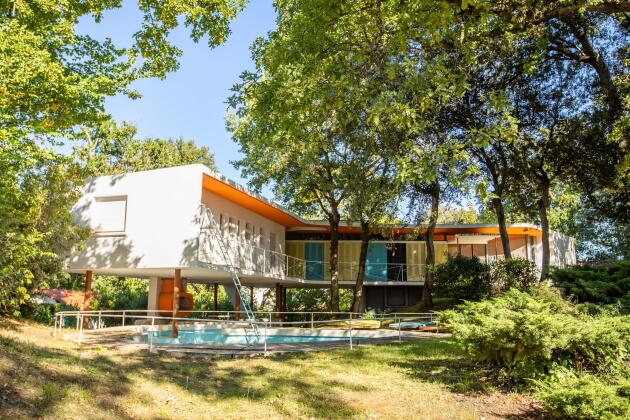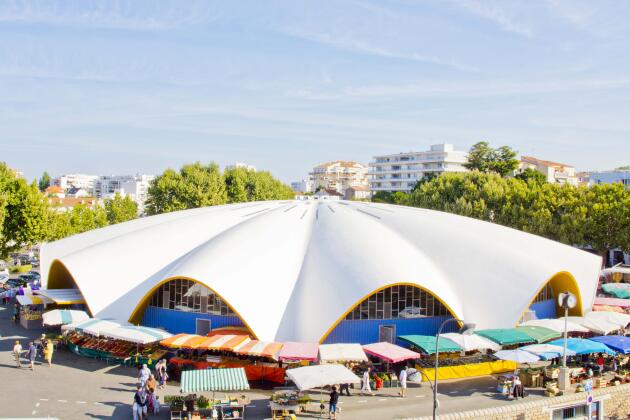THE MORNING LIST
Largely destroyed during the Liberation, Royan (Charente-Maritime), a very chic seaside town, was rebuilt after the war and in a hurry. Long little loved by its inhabitants, this architecture, typical of the 1950s, is today very popular.
Sea baths and large villas in Pontaillac
In the beginning was the sea. In the 19the century, bathing in the ocean, until then vaguely terrifying, became popular for medical reasons, initially, and later for fun. A Bordeaux entrepreneur, Jean Lacaze, discovered in 1850 what would become the Pontaillac district, bought 25 hectares and subdivided them. The plan is very hygienic: straight streets, swept by the breeze and all leading towards the sea. The arrival of the train from Paris multiplies the number of visitors. Some sumptuous villas were built there, which would be spared from future bombings. If they don’t visit each other, they can admire each other. The Castel-Horizon dominates the beach, all in cut stone and reminiscent of Renaissance castles. Further on, Villa Cordouan looks like a Trianon.
Mix of styles in the Parc district

Just as remarkable, the Parc district is almost the antithesis of the geometric Pontaillac. Here, the streets are winding, the houses are hidden, the trees overflow onto the street. We get lost there, we discover wonders almost by chance. Do you want orientalism? The very kitsch and Japanese Villa Kosiki (1886) has the false air of a pagoda. Modern architecture? Villa Boomerang (1959), almost entirely built on stilts, yellow and blue, evokes Oscar Niemeyer, a frequent reference here. On Boulevard Frédéric-Garnier, styles coexist with quiet audacity. The play on volumes of the cubic Ombre Blanche (1958) stands out between the imposing Villa Guyvonney (1909), where brick is very present, and the numerous recesses of the double facade of the Hôtel du Trident Thyrsé (1956) . Over a few dozen meters, the city unfolds all its eclecticism.
Concrete and reconstruction

On January 5 – then from April 14 to 17, 1945 – Royan was the victim of a “useless and tragic” bombing, as a commemorative plaque placed in front of the town church still says with bitterness. Some neighborhoods are 85% destroyed. The architect Claude Ferret took charge of the reconstruction. He imagines an arc of houses that follows the curve of the beach and a long straight path, Boulevard Aristide-Briand, which goes up to the market. Long criticized, this architecture is now being brought back to the fore. Three masterpieces stand out: the Notre-Dame church, an immense, long building whose interior, designed like a boat, is impressively powerful; the covered market, a concrete dome covering very varied stalls without the help of a single pillar; and the convention center, which has just been restored to its original beauty by ridding it of incongruous growths. And all Royan residents today mourn the demolition, in 1985, of the municipal casino, which was one of the jewels of the waterfront. This painful history is exposed in an extremely clear and poignant way in the brand new Interpretation Center of architecture and heritage (CIAP).
You have 43.47% of this article left to read. The rest is reserved for subscribers.
